The Discontinued Lexus CT200h Is Actually Updated for 2018
This is not the Lexus CT200h that was sold in the United States for seven model years.
This is the updated 2018 Lexus CT200h.
Lexus’ U.S. operations no longer wishes to bother with the CT, so 2017 is the end of the line for the hybrid hatch in America. But Lexus’ local discontinuation of the CT comes just in time for Lexus to update the CT200h for other markets.
The 2018 Honda Accord 2.0T Is, in Fact, Quicker Than a 2017 Honda Accord V6
We learned in June that the 10th-generation Honda Accord, launched this fall for the 2018 model year, would lose its optional V6 engine. The impact in the marketplace would scarcely be felt, as the overwhelming majority of buyers didn’t select the V6 engine, which had steadily become an option only at the top end of the range.
Honda also made clear that the conventional Accord lineup would still include manual transmissions, would not include a coupe bodystyle, and would be exclusively linked to turbocharged engines. The basic 1.5-liter turbocharged four-cylinder, rated at 192 horsepower and 192 lb-ft of torque (at 5,500 rpm and 1,600 rpm, respectively) provided an upgrade from the 2017 Accord’s 2.4-liter naturally aspirated four-cylinder, which produced 185 horsepower and 181 lb-ft of torque at significantly higher rpm.
Meanwhile, the 278-horsepower, 252-lb-ft 3.5-liter V6 is replaced by a 2.0T detuned from duty in the Civic Type R. The 2018 Accord loses 26 horsepower (and at 6,500 rpm, needs 300 more revs to hit peak bhp) but adds 21 lb-ft of torque while producing peak twist just off idle at 1,500 rpm, 3,400 rpm sooner than in the old V6. Paired now to a 10-speed automatic and not the six-speed of 2017, and tipping the scales with around 120 fewer pounds in top-spec guise, the 2018 Honda Accord 2.0T is expected to be only marginally more fuel-efficient than the old V6.
But what about acceleration?
Volkswagen of America Product Plans for Jetta, Passat, SUVs Are Becoming Increasingly Transparent
Volkswagen’s 2019 Jetta will be revealed this winter at the 2018 North American International Auto Show in Detroit. From the get-go, the Jetta will be available with a manual transmission, reports VWVortex. The Jetta GLI that follows one year later will almost certainly be marketed with the manual transmission Volkswagen killed off with the 2018 model year, Motor Authority says.
These and other details are becoming increasingly clear as Volkswagen’s North American CEO Hinrich Woebcken begins to release a great many details about Volkswagen’s next few years of product launches.
This is what we know so far.
The Discontinued Infiniti QX70, Nee FX, May Yet Return
2017 was the 15th and final model year for the Infiniti QX70, formerly known as the Infiniti FX. Sad, sad the day.
But is the QX70/FX, a dramatically curvaceous take on the modern idea of a crossover, dead and gone for good? Perhaps not. “We are now asking ourselves what is the QX70’s role?” Infiniti president Roland Krueger rhetorically asked Automotive News, “And what should it be?”
Maybe these questions come a year or two or 15 too late, but the fact that Krueger even broaches the subject suggests a high degree of willingness to reinsert the vehicle back into Infiniti’s lineup. If Nissan’s upmarket brand could copy the degree of success the FX earned early on in its tenure — more than 30,000 were sold in America in 2004 — then the rebirth can’t come soon enough.
Automakers Take Stock After Major Metal Supplier Admits Selling Shoddy Aluminum
It’s often hard to remove an ingredient after the cake’s emerged from the oven. Because of this, news of Kobe Steel’s falsified inspection reports no doubt came with a fair bit of nervous collar tugging for executives at several automakers.
The Japanese company, which has subsidiaries in numerous countries, is a go-to supplier for the automotive and aircraft industries, providing steel, copper and aluminum components to companies as diverse as Ford and Boeing. Last week, Kobe admitted to selling substandard (or suspected substandard) materials to 500 companies, among them Ford, Volvo, Toyota, Honda, Nissan, Mitsubishi, and possibly Mazda.
Oh, and Mercedes-Benz, Tesla, General Motors, Hyundai, and Renault.
Maybe you’ve heard of them.
TTAC Product Planning Advice: The Kia Stonic and Soul Edition
It seems so obvious as to be unmistakable. You’ve been selling an unexpectedly successful Kia Soul for nearly a decade, turning it from what was thought to be a niche-market idea into one of your most popular products.
Do that again.
Hence, here cometh the Kia Stonic. It’s not bound for America, at least not yet, but the Stonic serves elsewhere as the Kia version of the Hyundai Kona. Only unlike the Kona, the Stonic is — like the Soul — a front-wheel-drive subcompact-based “utility vehicle.”
Cargo volume? Virtually identical, at 12.4 cubic feet for the Stonic and 12.5 cubic feet for the Soul. Pricing? In the United Kingdom, the Soul stretches from £14,310 to £23,565, starting slightly below the Stonic’s £16,295 entry point and rising above the Stonic’s top-spec £20,495 price.
This overlap in price, mission, and size is exactly what the doctor ordered, so we have a few vital recommendations for Kia’s rivals.
Three-Row Honda CR-V is More Popular Than Honda Expected - You Still Can't Have It
If Australia is an effective test bed for American tastes — and it most definitely isn’t — then the three-row version of the fifth-generation Honda CR-V would be a hit stateside.
We told you way back in April that there were plans afoot at American Honda for a utility vehicle to slot in between Honda’s two-row CR-V and three-row Pilot. We then watched, intrigued, at the level of interest among TTAC readers when we showed you images in July of Honda Australia’s three-row CR-V. Could this be the SUV Honda plans to squeeze between the CR-V and Pilot? At the time, Honda told TTAC, “We can’t make comments about any future possibilities.”
So you’re telling me there’s a possibility.
There likely is only the most limited sort of possibility. The third row can’t be linked with all-wheel drive, for starters. It’s obviously snug. And American Honda already has the Pilot, which Honda does not offer in Australia.
Nevertheless, if the Australian test bed is looked upon as a case study, American Honda would discover a three-row, seven-seat CR-V that turns out to be more popular than expected.
What's Missing In Volkswagen's New "Rain" Warranty Commercial?
This commercial is not a circa 1970 follow-up to 1969’s infamous Woodstock Music & Art Fair. It’s not a the result of marketers in the 1980s looking back 10 or 15 years. It’s not Volkswagen’s late-to-the-party retro take on counterculture. No, this is Volkswagen’s People First Warranty commercial from 2017. Today.
It is a wholehearted embrace of Volkswagen’s history. The Microbus. An original Beetle. Hippies.
“I think what’s powerful about it,” Volkswagen of America’s marketing director Greg Tebbutt says, “is we’ve got a heritage story that is unique to us and only we can tell.”
But there’s something conspicuously absent from the 60-second “Rain” spot.
2018 Volkswagen Jetta GLI Kills the Manual Transmission
For the 2018 model year, Volkswagen of America is adopting an entirely different approach to its sports sedan transmission lineup than Honda and Subaru.
Unlike the Honda Civic Si, which is available exclusively with a manual transmission, and unlike the Subaru WRX, which is available with a manual transmission or a continuously variable automatic, the 2018 Volkswagen Jetta GLI will drop the manual transmission option.
American Minivan Sales Plunged to a 32-Month Low in September 2017
Minivan sales tumbled 16 percent to only 33,358 units in September 2017, the lowest total for America’s people-carrier sector since January 2015.
Between the disappearance of two nameplates (Nissan Quest and Mazda 5), limitations on Dodge Grand Caravan sales during a period of plant transition, and further decreases from the aging Kia Sedona and new Honda Odyssey, minivan volume fell 6,460 units below September 2016’s total and nearly 11,000 units shy of September 2015’s tally, and more than 10,000 units short of 2017’s monthly average through the first two-thirds of the year.
A positive spin is difficult to find.
Goodbye Volkswagen Scirocco, We Hardly Knew Ye
The Volkswagen Scirocco has reached the end of the line as the death bed for the third-generation model receives its patient after a prolonged but largely unsuccessful decade.
Closely related to the Mk5 Volkswagen Golf — not the Mk6 or Mk7 that were introduced during its tenure — the Scirocco always faced headwinds in the form of Volkswagen’s own more practical Golf GTI.
Although earlier iterations of the Volkswagen Scirocco and its Corrado successor were marketed in America, the latest Scirocco never made it across the Atlantic.
“That’s a piece of the lineup that I would dearly love to see here,” then Volkswagen of America CEO Jonathan Browning said four years into the Scirroco’s tenure. The concerns, of course, were related to the fact that the Scirocco would cannibalize the GTI, and vice versa.
And for that very reason — the fact that the Scirocco couldn’t succeed alongside the Golf — the Scirocco’s European experiment is ending before a rumored fourth-gen model could ever dream of making it in America.
Toyota Reportedly Plans to Slash Half of Its Japanese Lineup Over Eight Years
Toyota Motor Corporation is considering the possibility of cutting its home market product lineup by half.
Toyota currently markets more than 60 models in Japan, but there’s no expectation that the brand will suddenly cull its lineup to just 30 models by 2018. It will be a very long process, and it’s one that is likely to have minimal impact on the United States.
But which models are likely to go first? Perhaps one of the ten vans on offer.
Honda Appears Ready to Launch a Cheaper, Entry-Level 2018 Civic Type R
American Honda launched the 2017 Honda Civic Type R in a single, fully equipped variant. Although you don’t see it in emblem form on the back of the car, the 2017 Honda Civic Type R is sold exclusively in Touring trim. The model code, evidenced by NHTSA certification papers filed by American Honda and located by TTAC’s own Bozi Tatarevic, is FK8G7.
But Bozi found an extra Civic Type R in American Honda’s NHTSA filings for 2018. It’s still a Type R, it still uses the K20C1 engine that sends 306 horsepower to the front wheels through a six-speed manual transmission. But this is the FK8G3 Civic Type R, sans Touring.
There’s reason to believe it’ll be distinctly more affordable.
The 2018 Acura ILX Special Edition Is, Uh, Um… Just What the Acura ILX Needed?
It has become increasingly evident that America’s compact sedan consumers aren’t terribly interested in a semi-premium-branded version of a previous-generation Honda Civic.
Shocking.
But for 2018, the Acura ILX gains a new Special Edition. Ah, that’ll do the trick.
If U.S. Auto Sales Were Growing Like Canadian Auto Sales, Americans Would Buy 18.5 Million Vehicles In 2017
In concert with the American auto industry, Canada’s auto industry reported an all-time record year of sales in 2016.
The difference? In Canada, 2016 represented the fourth consecutive year of record sales. Another difference? Canadian auto sales just kept on growing throughout 2017. Most recently, that streak of increases included an 8-percent year-over-year uptick in September 2017. Sales last month were 16-percent stronger than they typically are in September.
Month after month after month, Canada’s auto industry just keeps on smashing records. It’s as if the U.S. auto industry posted its banner year of 17.5 million sales in 2016 and then bettered that with 18.5 million sales in 2017.
That Brief Spell in Which America Was Cadillac's Biggest Market Ended in September 2017
By the slimmest of margins, Cadillac’s U.S. operations put an end to China’s repeated dominance of Cadillac’s sales charts in August 2017.
But after Americans acquired two more Cadillacs than the Chinese did in August, normal order returned in September 2017. 49 percent of the Cadillacs sold around the world last month were delivered in China, where volume rose 38 percent, year-over-year.
Perhaps of greater consequence to Cadillac’s New York HQ is the fact that September sales not only increased in China but also in the U.S., Canada, and in its rest-of-the-world markets.
September was the 16th consecutive month of global Cadillac sales improvement. Naturally much of the credit belongs to the Cadillac XT5.
Have No Fear, Bowtie Faithful: the Chevrolet Camaro Will Not Wear a Holden Badge in Australia
General Motors’ Australian outpost is losing all of its domestic production, but that doesn’t mean Holden is shutting down all of its Australian development operations.
Late last month, we told you the Chevrolet Camaro was going to become a right-hand-drive model five years earlier than originally planned because of special rebuilds by GM’s Holden division.
But once the Chevrolet Camaro goes on sale Down Under, it will not wear the local GM badge.
2018 Mitsubishi Outlander PHEV's Arrival Equals Good News and Bad News
Mitsubishi is by no means starting from scratch in the U.S. market — the product lineup is much too stale for that. But with a new marketing agency, Butler Shine Stern & Partners, coming on board and a new crossover, the Eclipse Cross, set to arrive at dealers soon, Mitsubishi is clearly not in the same position in 2017 that it was in 2009.
2017 is set to be fifth consecutive year in which Mitsubishi’s U.S. volume improves and the first year since 2007 in which Mitsubishi sells more than 100,000 vehicles. That’s still a far cry from 2002, when Mitsubishi sold 345,000 vehicles, but Mitsubishi has reasons to be pleased with the growth.
Perhaps more than any other change at Mitsubishi’s U.S. operations, however, the arrival of the plug-in Mitsubishi Outlander symbolizes a new day for Mitsubishi Motors North America. It is, after all, finally here after years of delay, and it’s an exclusive product for Mitsubishi’s dealers, free from direct competition. Yet while the dawn of the 2018 Mitsubishi Outlander PHEV speaks of further commitment to the U.S. market, it’s not by any means about to become a popular vehicle.
Hey, If Audi Wants the New 2018 A8 to Look Like a Discontinued Dodge Dart, I'm Okay With That
My Dodge Dart awareness is not what it should be. I’m not fully up to speed on the Dodge Darts of yore. Despite my parents’ ownership of a Dart, the 1960-1976 period was not an era in which I was a sentient being.
As for the newer Alfa Romeo Giulietta-based Darts, I’m not fully on board with America’s rejection of the car. By the end of its second full year, nearly 200,000 Dodge Darts had been sold. Sales increased yet again in 2015. But without factory support, real demand was rather limited. Only 43,402 Darts were sold in the United States in 2016, the year Dart production came to a premature end.
Man, I loved that car. Oh, I don’t mean the way it drove, and certainly not the way it shifted. I’m not talking about interior packaging or its engine lineup or its interior quality. Whatever. Pfft. Who cares. I just genuinely liked the way it looked: the proudly Dodge front end, those completely wheel-filled arches, and especially that distinctive rear end.
I’m therefore pleased to see Audi resurrecting that look for the fourth-generation 2018 Audi A8, the brand’s flagship sedan.
This Is the Next Mazda 3… 's Silhouette
The 2019 Mazda 3 will be previewed by a concept at the 2017 Tokyo Motor Show on October 24th. Realistic enough to represent an accurate vision of what the fourth-generation Mazda 3 will look like, but not so faithful to a production model that’s entirely realistic, the concept will potentially be more noteworthy due to the Skyactiv-X engine under the hood.
Skyactiv-X, long rumored, was announced more formally in August. A supercharged four-cylinder with sparkless compression ignition should result in substantially more torque and reductions in fuel consumption of more than 20 percent. That could make the next Mazda 3 a 43-mpg car on the EPA combined scale.
As far as the design, Mazda isn’t promising a revolution with the aptly titled Next-Generation Product Concept. In fact, what little Mazda is saying on the subject is tied largely to the high-tech powertrain.
Ford Retiree J Mays Says German Cars Don't Look German, Reserves Particular Criticism For One Automaker
“I think the British do a pretty good job — they seem to produce cars that look British,” Ford Motor Company’s retired design chief J Mays says.
Given that Minis essentially look the same as they’ve always looked, Mays makes a good case.
But Mays tells Automotive News he’s “a big stickler for cultural relevance.” And while the man whose influence can still be seen across much of the Ford lineup — he retired three years ago — credits the Brits for bringing culture to car design, he gives no such credit to the Germans.
General Motors Going Back Into the Defense Business
“Old soldiers never die,” the saying goes, “they just fade away.”
And that’s exactly what General Motors, no stranger to U.S. military products, did following the Cold War. The company that once produced the Cadillac-built M5 Stuart tank and Buick-built M18 Hellcat tank destroyer in World War Two sold its military products division — GM Defense — to General Dynamics in 2003.
However, just because Stryker and LAV III light armored vehicle production is now someone else’s responsibility doesn’t mean GM isn’t interested in fulfilling the military’s needs. The company still ships engines and transmissions to the Army, but according to a new report, the automaker is once again planning an official military division.
Aston Martin Sales Are Rising, but They're About to Rise Much Faster
Aston Martin, builder of premium British GT cars, does not sell nearly as many cars as it used to. In fact, Aston Martin’s 2017’s output will fall some 30 percent below the brand’s record volume from a decade ago.
But that’s only part of the story. Aston Martin’s global 2017 volume will be 36-percent higher than it was just last year. Moreover, Aston Martin sales will more than double in the next two years.
The Chevrolet Bolt Is Now Far More Popular Than the Chevrolet Volt
If plug-in hybrids were meant to function as a stop-gap between ICE-powered cars and fully electric cars, it may be time to consider Chevrolet gapless.
The Chevrolet Volt appeared in first-gen form in late 2010. By 2016, with the arrival of a second-generation edition, Volt sales climbed to record levels in the United States, albeit still not at the level GM originally hoped to see.
The Volt was and is a plug-in hybrid, an electric car with a range-extending gas-powered engine.
But with nationwide availability of the Chevrolet Bolt — change that V to a B for pure electricity — we’re now watching as Chevrolet Volt sales tumble. It turns out General Motors now has far more U.S. demand for its electric car than its ICE-accompanying electric car.
2018 BMW X3 Is Supposed to Become the Segment Sales Leader, but It's Priced Higher Than Key Competitors
Munich HQ has huge expectations for the third-generation BMW X3. The X3, after all, was the vehicle that ignited the compact luxury SUV craze, the vehicle that spawned competitors such as the Audi Q5, Acura RDX, Mercedes-Benz GLK/GLC, Volvo XC60, Lexus NX, and Porsche Macan. Surely the X3 has the power, the might, the capacity for sales domination, right?
“We created that segment,” BMW CEO Harald Krueger said in July. “The No. 1 approach and target I clearly have is, there shouldn’t be anyone besides us who is No. 1.”
“If somebody on my team is not performing to that, well, he has a problem,” Krueger says, making clear to BMW USA’s Bernhard Kuhnt that greater global production of the X3 will mean greater allocation, which had better mean greater U.S. sales.
BMW will not, however, seek to achieve the lofty sales goals by introducing the 2018 X3 with a price that undercuts its key rivals.
Partial Next-generation Jeep Wrangler Engine Specs Leaked? [UPDATED]
Our resident document digger, Bozi Tatarevic, stumbled upon a document submitted to the National Highway Traffic Safety Administration that may confirm at least some details about the next Jeep Wrangler.
The docs appear to confirm that the upcoming JL-platform Wrangler will offer two engines at launch – a 3.6-liter V6 that makes 285 horsepower and a turbocharged 2.0-liter four-cylinder that makes 368 horsepower. Yes, you read that right.
The other piece of news gleaned from the submitted docs is that the Wrangler will initially debut as four-door only. Just three trim levels were listed: Sport Unlimited, Sahara Unlimited, and Rubicon Unlimited.
Midsize Sedan Deathwatch #16: The Decline of the Midsize Class's Middle Class
Ever more minor midsize players continued to see their share of America’s midsize sedan segment dwindle in September 2017. The cause: domination on the part of America’s two major midsize cars.
The all-new 2018 Toyota Camry enjoyed its first full month of meaningful availability in September and produced a 13-percent year-over-year U.S. sales improvement as a result. Meanwhile, Honda is clearing out remaining 2017 Accords in advance of the all-new 2018 Accord’s arrival this fall. Honda’s efforts produced a 10-percent uptick compared with September 2016.
Yet despite the big gains from the two major players, the upper class, the midsize segment still declined 7 percent in September because of sharp declines by many members of the middle class.
That means Camry and Accord market share continues to rise. That means the slice of the market earned by the middle class continues to shrink.
Fourth-generation Ford Focus Goes Upmarket, Spawns an Active Variant Of Course
Rarely does one hear an automaker point out that the next generation of a popular product is headed downmarket.
Even when a vehicle is repositioned in a lower end of the market, “downmarket” is the last word you’re going to hear out of an auto executive’s mouth. Instead, automakers up the value quotient, cater to the demands of discerning buyers, or find new production efficiencies we can pass on to the customer.
More often, automakers tout their new product as a move upmarket. So it is with Ford Motor Company’s fourth-generation Focus, according to Jim Farley, formerly of Ford of Europe and current head of Ford global markets. “It goes upmarket in exactly the same way as the new Fiesta,” Farley says.
Also like the new Fiesta, the 2019 Ford Focus will spawn an Active variant. Subaru Crosstrek here we come?
2018 Chevrolet Traverse RS Is a More Expensive, De-powered, Less Efficient Front-drive Traverse
Priced at $42,995 including destination fees, the late-arriving 2018 Chevrolet Traverse RS is an oddly positioned member of the second-generation Traverse lineup.
The RS is the only four-cylinder member of the fleet — it’s down 53 horsepower on the 3.6-liter V6 in other Traverses — and yet a basic Traverse RS costs $12,120 more than the least costly Traverse. The RS consumes more fuel on the highway, albeit slightly less in the city. It’s also available exclusively as a front-wheel-drive model.
Ah, but GM says it’s “sporty.”
U.S. Attempts to Convince South Korea to 'Buy American'
Officials from the United States and South Korea held a special session in Washington on Wednesday as part of U.S. Trade Representative Robert Lighthizer’s request to consider amending the two countries’ trade agreement. The joint talks serve to reassess the countries’ five-year pact, with the Trump administration aiming to diminish America’s growing trade deficit with South Korea.
One of the largest issues concerns the automotive industry. Korean rules stipulate a cap on the number of vehicles U.S. automakers can bring into the country each year that adhere to the country of origin’s safety standards. Presently, that quota sits at 25,000 vehicles per manufacturer. However, no U.S. company has ever made full use of the quota. General Motors, which is the most popular U.S. brand in South Korea, only sold 13,150 domestically built units in 2016.
Camry Crusher: Honda Civic Expands Lead as America's Best-selling Car
In many ways, September 2017’s auto sales bucked the trend. After the industry combined for decreased volume, year-over-year, in each of 2017’s first eight months, auto sales in September rose 6 percent. Meanwhile, the shrinking car sector that tumbled 12 percent through the first two-thirds of 2017 was down only 3 percent in September.
There were two big reason the passenger car decline wasn’t worse: America’s two best-selling cars.
Excluding the Honda Civic and Toyota Camry, U.S. car sales fell 6 percent. But as the clear-out of remaining 2017 Honda Accords got underway and produced 10-percent growth, the launch of the 2018 Toyota Camry generated a 13-percent uptick. Meanwhile, the Honda Civic’s 26-percent surge allowed the compact Honda to expand its lead over the midsize Camry in the race to end 2017 as America’s best-selling car.
Truth in Numbers: Tesla Motors Kind of Lied to Us
Yesterday, we mentioned how Tesla was behind schedule with its everyman Model 3 — delivering only 220 units to the half-million reservation holders since the start of production in late July. While we knew it would get off to a slow start, CEO Elon Musk previously assured the public that production would increase exponentially through the end of the year by way of a “ production hell” trial by fire.
Musk claimed there should be “zero concern” about Tesla achieving a production rate of 10,000 cars a week before the end of next year. But many wondered if that was even possible. Despite Tesla making serious strides to increase production volume this year, we remained dubious that the proposed numbers were even feasible for a fledgeling automaker.
As it turns out, they weren’t — and the company knew it.
Midst Yet Another FCA Sales Decline, Jeep Shows Powerful Signs of Life
September 2017 sales at Fiat Chrysler Automobiles decreased on a year-over-year basis for a 14th consecutive month, extending a stretch of declines that began in August of last year.
For much of that time span, the U.S. automobile industry was reporting declining sales, as well. And for much of that time span, even as total U.S. auto sales kept on sliding, SUV/crossover sales were rising. For much of that time span, Jeep sales were falling.
Technically, officially, Jeep sales kept on falling in September 2017, the U.S. auto industry’s first month of improved sales this year.
But if you’d just ignore the Jeep Patriot for a moment, we can look at a clearer picture.
Four Reasons Why September 2017's U.S. Auto Sales Picture Isn't As Rosy As It Seems
In September, for the first time in 2017, auto sales were higher this year than last.
Substantially higher.
Compared with September 2016, auto sales in America last month were 6 percent higher, far healthier than the modest sub-1-percent uptick analysts predicted. Booming pickup truck volume, big gains from America’s best-selling SUVs and cars, continued growth from trend-bucking Subaru, and rebounds at Volkswagen resulted in an industry that reported 1.5 million total sales, nearly 90,000 more than in September 2016.
The seasonally adjusted annualized rate shot up to 18.6 million, the best SAAR since July 2005, according to Automotive News. Over the last half-decade, Americans have averaged fewer than 1.3 million September new vehicle acquisitions. Last month’s result was 18 percent better than the September average.
Sunshine and roses? An end to the U.S. auto industry’s gradual slide? A sign of a perfectly healthy market? We have four reasons you should be skeptical.
Ford CEO Outlines New Vehicle Development Plan, Shifts Investments, Trims Fat (and Models)
After much speculation, Ford CEO Jim Hackett has finally outlined where his company’s dollars will be spent in the foreseeable future. Hackett spent his summer performing what Ford called a “four-month deep dive” into the company’s strategy and business operations to see what changes needed to be made. His conclusions? This may surprise a few readers, but Ford will continue building and selling automobiles.
Alright, that isn’t a bombshell, but the brand is trying to frame itself as the Ford you’ve always trusted while also letting everyone know it’s still a “mobility company” with its eyes fixed on tomorrow. Without the public relations veneer, that plan translates into a reduced number of production models and trims, more money for electrification R&D, less for internal combustion engines, and a significant reduction in material costs.
Hackett’s address also served to reassure the nervous shareholders who ousted his predecessor, Mark Fields. Ford’s stock declined more than 30 percent during Fields’ tenure and many complained that his vision of transitioning from a traditional automaker to a Silicon Valley look-alike was partly to blame. Hackett did everything in his power to ease those fears.
“We’re going to be in the vehicle business moving both people and goods. Some myth about not being in the car business is gone,” Hackett told Wall Street.
Subaru Ascent Production Begins in Spring 2018: Work Underway To Squeeze SUV Into Indiana Facility
Subaru reported in September 2017 the brand’s 70th consecutive month of year-over-year growth. The growth rate is not modest. Five years ago, Subaru had never reported more than 336,000 U.S. sales in a calendar year. Yet with one-fourth of 2017 remaining, Subaru has already reported 478,848 U.S. sales in 2017 and is on track to sell more than 650,000 vehicles by the end of the year.
Subaru is not, however, without challenges. The rate of sales improvement has not been matched by a commensurate improvement in the dealer network’s ability to service vehicles, for example.
Another issue? Subaru needs to create space for production of its next new vehicle, the three-row Ascent SUV, in Lafayette, Indiana. Subaru already builds its best seller, the Outback, in Indiana, and with the latest generation of the Impreza, the brand’s compact car joined the midsize Legacy as an Indiana-built model, as well.
For the Ascent, which Subaru confirmed is set to begin rolling out of the Indiana plant in the second-quarter of 2018, Subaru has received the necessary permits to increase production by 66 percent compared with the original joint Toyota/Subaru facility.
QOTD: What Will Force You From a Manual Transmission, Permanently?
Yesterday, Steph Willems penned a little Question of the Day about the manual transmission. In it, he asked what would have to occur to get you, the buying public, back into the manual transmission in a large-scale way.
As of this writing, it’s blowing up the comment counts as everyone lists the particulars of how they hem and haw over the manual transmission. Shifting a vehicle yourself is romanticized and desirable; a bygone art to be treasured and maintained for future generations of drivers.
Except when it isn’t. What would force you from a manual transmission vehicle for the rest of your days?
U.S. Auto Sales Brand-by-Brand Results: September 2017 YTD
U.S. auto sales exceeded analyst expectations with a big 6 percent year-over-year increase to 1.5 million units in September 2017, the first monthly improvement in 2017 so far.
After auto sales fell 3 percent during the first two-thirds of 2017, big September increases from Toyota Motor Corp., General Motors, Ford Motor Company, American Honda, Nissan’s trio of brands, and numerous smaller outfits brought the sales pace achieved through the first three-quarters of 2017 within sight of 2016’s record rate. By the end of September, U.S. auto sales are down by less than 2 percent compared with last year.
Pickup trucks played a major role in September’s improvements, growing at twice the rate of the industry at large. The Honda Civic expanded its lead as America’s best-selling car on a quest to end the Toyota Camry’s 15-year run. Minivan sales plunged to barely more than 33,000 units. The Toyota RAV4 topped 42,000 sales for a second consecutive month, leading a booming SUV/crossover class.
Electric Cars Are Nice, but Audi Customers Still Demand V8s
Did you hear the news? Every automaker worth its salt will switch to electrified, fully autonomous vehicles yesterday.
Bored yet? Very likely so, but the people laying out money for cars still have a say in what vehicles automakers produce, and for high-end buyers, prestige doesn’t necessarily come wrapped in the latest technology from the pages of Wired. Big-money buyers want big power and, while that increasingly means the latest in twin-turbocharged, downsized wonderengines, it isn’t always so.
Audi can’t wait to challenge Mercedes-Benz, BMW, and Jaguar in the premium electric car race, but there’s no way its customers would agree to the disappearance of a proper eight-cylinder gasoline engine, claims the brand’s technical development chief.
September 2017 Was a Terrific Month For Pickup Truck Sales in America
September 2017 sales of pickup trucks rose to the highest level so far this year in the United States, jumping 12 percent to 257,864 units.
Prior to this point, truck sales had grown by less than 4 percent, year-over-year, averaging slightly more than 225,000 monthly units.
September’s big gain was fuelled almost entirely by improvements among the full-size pickup trucks that own 84 percent of America’s pickup truck market. And America’s full-size pickup truck gains were powered in large part by America’s best-selling line of vehicles: the Ford F-Series.
Genesis Motors U.S. Dealer Network Will Be Separate From Hyundai by 2020
Hyundai’s Genesis Motors offshoot intends to finalize its transition into an entirely separate U.S. dealer network within the next three years.
The process of building an undetermined number of distinct Genesis outlets has not yet begun, but it’s clear the brand is well aware of the limitations with which it’s currently operating.
“The reality is, many, many luxury customers tell us they love our products, they’re amazing, but I’m not going into a Hyundai store to buy it,” U.S. Genesis boss Erwin Raphael tells Automotive News.
No kidding.
Mazda CX-3 Wants to Save the Manuals, Too
Every Sunday or Monday, a very generous man appears in my driveway with a new car. The same man, in not as generous a fashion, also removes a car from my driveway. The most recent exchange involved the arrival of a fourth-generation 2018 Kia Rio and the departure of the 2018 Mercedes-Benz E400 4Matic Coupe we reviewed last week.
“Chilly one today, eh?” I say.
“I’m preparing myself for some cold days in PEI this winter,” Mr. Sowerby says with a chuckle. We chat for a moment about a recent Chevrolet Traverse event that was slathered across my Twitter feed, and as Garry gets into the Mercedes-Benz to depart he says, “You’re getting a Mazda CX-3 with a six-speed stick next week.”
Huh? It can’t be. Seriously?
For real.
Honda Wanted 2018 Accord to Top Midsize Class in Fuel Economy - It Does No Such Thing
From a historical midsize perspective, the all-new 2018 Honda Accord is rather thrifty with the Earth’s decreasing supply of oil.
It’s fuel efficient, in other words. Over the span of 10,000 highway miles, the basic 2018 Honda Accord is expected to consume 263 gallons of regular octane gasoline. That’s only 13 more gallons than you’ll consume in a 2018 Honda Civic Hatchback with the same 1.5-liter turbocharged four-cylinder. It’s 15 fewer gallons than you’d have used in the most efficient non-hybrid 2017 Honda Accord.
The city improvement is more meaningful. The 2017 Honda Accord four-cylinder topped out at 27 mpg in the city, equal to $944 for 10,000 miles at the current fuel price of $2.55/gallon. The new 30-mpg Accord reduces city consumption in the same scenario to $850, a 10-percent decrease.
The 2018 Honda Accord is not, however, the most fuel-efficient car in America’s midsize sedan category. Honda thought it would be. Honda was wrong.
FCA's Sergio Says Spinning Off Magneti Marelli is His Best Option
Fiat Chrysler is trying to work some financial magic to make itself look more appetizing to prospective investors. However, few buyers are likely to be interested in the whole of FCA. Its North American half has proven adept at assembling sport utility vehicles and Jeep would be a tasty morsel for any company hoping to expand its portfolio. But the Italian arm’s focus on smaller automobiles could get in the way of a potential deal — especially if the buyer already has their own.
CEO Sergio Marchionne wants the company to be purchased by an established automaker, but there are precious few that would want everything it has to offer. One possible solution is to separate subsidiaries from the core group. Marchionne says that might be the best solution for dealing with component supplier Magneti Marelli.
FCA has been of the mind that streamlining the business is the best way to attract investors without harming subsidiaries. After all, it worked well enough for Ferrari. The brand was spun off from FCA in late 2015, and its stock valuation embarked upon a rocket ride to the moon the following month.
The Subaru Legacy Sport Utility Sedan Returns, in a Sense
What does an automaker do after the company’s three-year-old midsize sedan — the only midsize sedan with standard all-wheel drive — is slightly upgraded for 2018?
It initiates a new marketing campaign. And what must that marketing campaign entail when the car is chronically unpopular and suffering from sharp sales declines in a shrinking category? It must utilize a catchy, attention-grabbing slogan.
Thus, for 2018, Subaru gives us the rebirth of a tagline: sport utility sedan.
Only this time, unlike 1998, the Legacy SUS isn’t lifted, it doesn’t wear two-tone cladding, its tires’ lettering won’t be emboldened by white font. The 2018 Subaru Legacy Sport Utility Sedan is just a Legacy.
Any Electric Mazda Will Actually Be a Toyota
Of all automakers, no company holds out hope for the gasoline engine’s longevity quite like Mazda. Not only does Mazda anticipate many decades of continued hydrocarbon-fueled driving, it’s also ensuring gas stays viable by inventing a new Skyactiv engine that (supposedly) uses much less of it. That motor, a first-of-its-kind gas compression ignition four-cylinder, debuts in 2019.
For now, Mazda’s North American lineup remains pure in terms of propulsion. The promised CX-5 diesel is taking its sweet time showing up, and neither a hybrid or EV can be found among the model ranks. That will soon change, but given Mazda’s size and finances, it won’t be a Mazda platform underpinning the next Mazda EV.
Old Hat: European Sale of Diesel Cars Overtaken by Gasoline for the First Time Since 2009
Diesel-powered passenger vehicle sales have fallen in Europe. Data from the European Automobile Manufacturers Association (ACEA) showed diesel’s year-over-year market share plummeting in the first half of 2017, sinking from 50.2 percent to 46.3 percent of all new car registrations in the EU.
Helped by negative publicity and governmental intervention, it’s the first time diesels have dipped below the 50 percent mark since 2009. ACEA’s figures indicate 152,323 fewer diesel cars sold so far in 2017, attributing some of the decline to a renewed interest in gasoline-powered vehicles. Of course, if you aren’t buying diesel, you don’t have a lot of other options.
Still, deliveries of “alternative” vehicles — which include hybrid, electric, and natural gas-powered automobiles — also rose by more than 35 percent. Those categories now account for 5.2 percent of Europe’s total auto sales.
Detroit's Passenger Car Sales Are Falling Way Faster Than the Overall U.S. Auto Industry's
Across the U.S. auto industry, there are a number of auto brands that are actually selling more passenger cars in 2017 than in 2016: Jaguar, Lincoln, Infiniti, Subaru, Volkswagen.
Some specific models, many with all-wheel-drive availability like the Audi A5, Subaru Impreza, and Volkswagen Golf, are enjoying far greater sales success this year than last.
But you know the story. Generally speaking, Americans are buying far fewer cars now than they used to. From more than 50 percent just five years ago, passenger car market share is down to 37 percent. Nowhere is this more obvious than at traditional domestic manufacturers, the Detroit Three.
Duck and Coverage: Volkswagen Extends Factory Warranties to 6 Years/72,000 Miles
Keen to improve its image after its diesel emissions fiasco, Volkswagen has decided to provide 2018’s lineup with some of the juiciest, most delectable extended warranties available from an automaker. Better still is that the warranty is transferrable to subsequent owners.
While most manufacturers provide the typical three-year/36,000 mile basic warranty with separate five-year/60,000 mile powertrain warranty on their cars, Volkswagen is tossing 6-year/72,000 mile bumper-to-bumper coverage on practically everything coming out next year. The only exception is the battery-driven e-Golf, which will persist with the industry standard.
Primed to End the Toyota Camry's 15-Year Run, Honda Does Not Mess With 2018 Civic's Recipe
George W. Bush was finishing his second year as president of the United States when Toyota reported 434,145 Camry sales in calendar year 2002. No other passenger car generated more U.S. volume that year.
Or the next year. Or the next. Or the one after that. In fact, the Toyota Camry’s reign as America’s best-selling car continued for a decade and a half, stretching from 2002 through 2016.
Unless the launch of the all-new 2018 Toyota Camry results in a superior final third of 2017, however, Toyota’s tenure atop the leaderboard will end this year. Ahead of the Camry by 1,153 sales through the first eight months of 2017 is the Honda Civic.
With 2018 Civics arriving in Honda showrooms on October 3, 2017, Honda is determined to leave well enough alone. The recipe is unchanged. Honda will not mess with success.
Time to Go Global? GM Australia's Holden Special Vehicles Building Right-hand-drive Chevrolet Camaros for Sale in 2018
In response to the huge global success achieved by the sixth-generation Ford Mustang, General Motors’ Australian Holden branch is developing right-hand-drive Chevrolet Camaros for sale in 2018.
According to Australia’s News, the beleaguered Holden brand will benefit from the launch of a market-specific Camaro next year thanks to conversion work done by Holden Special Vehicles.
General Motors is no doubt privy to news that the Ford Mustang became a global hit when the sixth iteration launched with independent rear suspension and right-hand-drive availability. The Mustang arrived in the United Kingdom in late 2015, for instance, and quickly outsold all other sporting coupes, earning the bulk of its sales from V8 versions. And in Australia, where Ford originally anticipated 1,000 annual Mustang sales, the Blue Oval is running at a roughly 10,000-unit annual pace.
Selling far fewer Camaros in its home market than it used to, Chevrolet could certainly use a global boost for its high-performance coupe. But the sales boost may be modest, as Australia’s Camaro is destined to be far more costly than the Mustang.
A Quarter of the Vehicles Sold Through CarMax Had Unresolved Safety Issues, Study Claims
Over 25 percent of the used vehicles sold through eight CarMax locations in the United States had recall defects that were not addressed, according to a recent safety report.
The 2017 study, conducted by the Center For Auto Safety, the Consumers for Auto Reliability and Safety Foundation and the MASSPIRG Education Fund, noted that vehicles with unresolved safety recalls had more than doubled since 2015 at the five locations surveyed in both years. That is worthy of a raised eyebrow or two.
Questions remain, however. While the review cites numerous locations selling vehicles with what many would consider unacceptable issues, we don’t definitively know if this is indicative of CarMax as a whole. But lets face it, there were 64 million vehicles recalled for safety problems last year — exceeding the total for the previous three years combined.
2018 Kia Stinger is $95 Cheaper Than 2017 Kia Cadenza
Let’s face it. Most American car buyers in 2017 don’t actually want cars. You know, the traditional passenger car. Most car buyers who actually want cars don’t want full-size sedans built by mainstream sedans. And among the few car buyers who actually want full-size volume brand sedans, the overwhelming majority — 99 percent, in fact — do not want a Kia Cadenza.
The U.S. market is about to get a lot more difficult for the Kia Cadenza, which is currently priced from $32,890. Admittedly more powerful than the forthcoming 2018 Kia Stinger, the Kia Cadenza is a nearly five-year-old front-wheel-drive luxury barge in a semi-attractive Kia body.
The 2018 Kia Stinger, on the other hand, is a flashy new cut-price sports sedan hatch, a model deserving of some anticipation that’s priced from $32,795, or ninety-five dollars less costly than the chronically unpopular Kia Cadenza.
For the First Time in 2017, September Auto Sales May Have Increased, Slightly, Perhaps
Both Edmunds and Kelley Blue Book are forecasting marginal year-over-year sales increases for the U.S. auto industry in September 2017.
If the analysts prove correct, it will be the industry’s first month of growth since December of last year. What’ll it take to push the industry beyond the 1.43 million new vehicles sold in September 2016?
The big gains from General Motors and Toyota will have to be big enough to overcome big losses from Fiat Chrysler Automobiles and Hyundai-Kia.
Mournful Glances: Carryover 2018 Ford Fiesta Loses the $995 Three-cylinder EcoBoost Engine Option
At TTAC, we’re big fans of Ford’s 1.0-liter three-cylinder EcoBoost engine. In the right application — the sixth-generation Ford Fiesta — the EcoBoost triple is a happy revver, a fuel miser, a torque manufacturer, a smooth operator.
In fact, we’re such big fans of the EcoBoost three-cylinder that our editor-at-large bought and paid for a Fiesta 1.0 EB long-termer with his own money. That’s a strong recommendation. Recommendations don’t come any stronger than that.
With the existing, aged, increasingly antiquated Mexico-built Ford Fiesta continuing as a 2018 model year subcompact whilst much of the world benefits from the launch of a new generation of Fiestas, Ford is trimming the Fiesta lineup. The standard 1.6-liter four-cylinder persists; the Fiesta ST forges on.
But the Ford Fiesta’s 1.0-liter EcoBoost three-cylinder is signing off.
Non-Detroit Three Automakers Already Sell More Cars in North America, and Soon They'll Make More
Detroit’s dominance in the domestic automotive sphere continues to erode. Whereas the manufacturing hub, home to Ford, General Motors, and Fiat Chrysler Automobiles, once churned out the bulk of vehicles built — and sold — in the United States, times have changed.
The former Big Three automakers no longer hold the majority market share in the U.S. (in 2016 it was 44.9 percent), necessitating a name demotion to “Detroit Three.” From Silicon Valley to the Midwest and South, a diverse group of automakers is busily assembling cars and SUVs for a population with very wide-ranging tastes. We’ve long since become used to the idea that many Hyundais now hail from Alabama, several Subarus come from Indiana, Honda models grow in Ohio, and BMWs arrive from South Carolina with a Southern drawl.
Now, one industry watcher claims the Detroit Three won’t even finish the year as the majority builder of North American-made vehicles.
We Regret to Inform You… the Hyundai I30 N Is Outstanding
Unfortunately, the new Hyundai i30 N is, by all accounts, a terrific hot hatchback.
The i30, you’ll recall, is essentially the Hyundai Elantra GT that’s beginning to arrive in U.S. showrooms, a pleasantly tasty car in Sport trim.
But Hyundai’s new performance N sub-brand, headed up by former BMW dynamics sage Albert Biermann, is not yet America-bound. And while European critics broadly praise the i30 N — not just as “a pretty stunning first effort from Hyundai’s N division” but “up there with the best” competitors — and celebrate the availability of yet another viable performance car, the car will not make it across the pond.
Jaguar Is Committed to Its Increasingly Popular Diesels in America, but the Marketing Plan Is Quiet
Jaguar’s U.S. outlets are benefiting not just from last year’s introduction of a new XE entry-level sedan and the brand’s top-selling F-Pace SUV but also the broad availability of diesel powerplants.
In the shadows of Volkswagen’s diesel emissions scandal that broke in late 2015, Jaguar began offering diesel engines in the United States for the first time in 2016. Through the first eight months of 2017, 13 percent of the vehicles sold by the Jaguar brand in America were powered by the company’s 2.0-liter turbodiesel.
It’s not surprising then that Jaguar told TTAC’s own Adam Tonge at the North American unveiling of the new E-Pace crossover that diesel will continue to be a focus for Jaguar Land Rover in the United States. The company sees a niche for diesel vehicles in the premium space, particularly now with the complete absence of Mercedes-Benz, Audi, and Porsche in the sphere.
And yet you won’t really be hearing about Jaguar’s diesel offerings.
Get Ready, Here Comes the Sexy New 2020 Dyson
Herbert Hoover promised Americans a chicken in every pot and a car in every garage, but another man with a vacuum-associated name, James Dyson, wants to put electric cars in every parking spot.
Dyson, maker of strangely desirable vacuum cleaners and unsettlingly futuristic fans shaped like an elongated oval, wants to build you a car. Of course, we told you this last year, after the British government let slip that it was “funding Dyson to develop a new battery electric vehicle at their headquarters in Malmesbury, Wiltshire.”
The secretive UK-based company now claims you’ll see its new car in just three years.
Toyota Will Spend $374 Million on Five U.S. Plants - Think Hybrids and Camrys
Toyota announced yesterday that its plans to invest $10 billion in the United States, revealed earlier this year, will grow by another $374 million with big spending at five different factories in five different states.
Kentucky, Tennessee, West Virginia, Alabama, and Missouri will all benefit. Though it’s unlikely the investments will directly translate to much in the way of new employment — Toyota promises 50 new jobs in Alabama — Toyota says “these investments will help to ensure the stability of the plants’ employment levels in the future.”
At the core of the investments? Toyota is spending money to enable greater production of the new TNGA 2018 Toyota Camry’s 2.5-liter engines and hybrid transaxles. Why America? “The investment is part of our long-term commitment to build more vehicles and components in the markets in which we sell them.”
Toyota sells 200,000 vehicles per month in the United States.






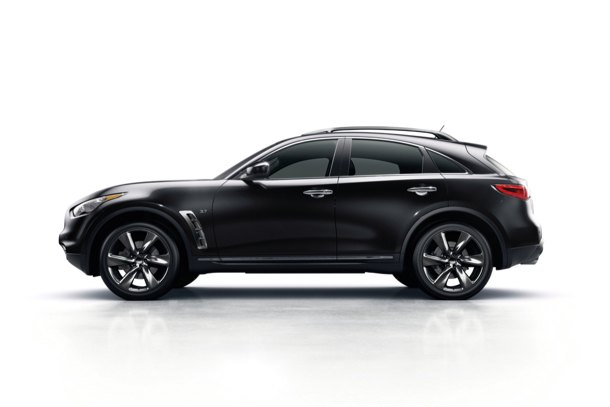





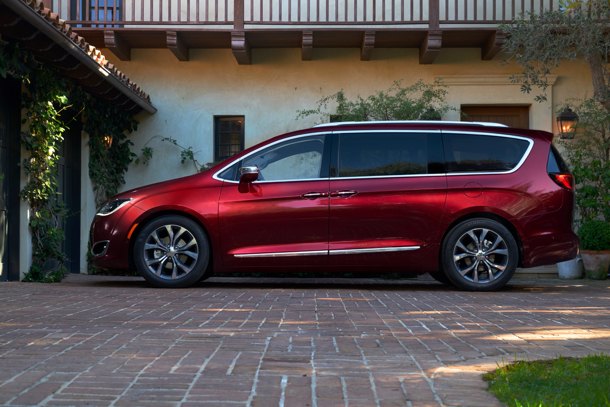
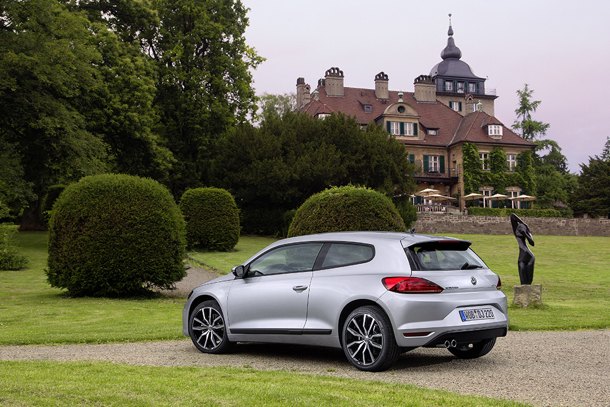
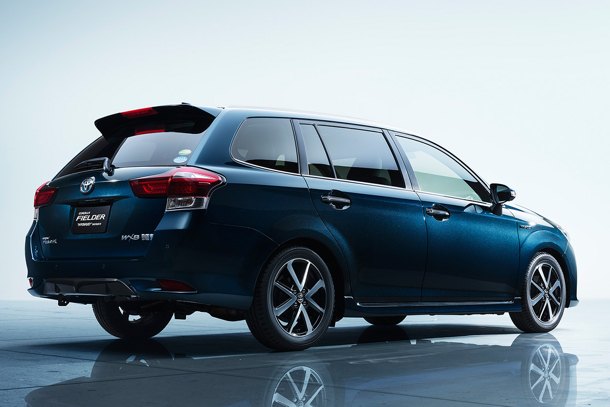
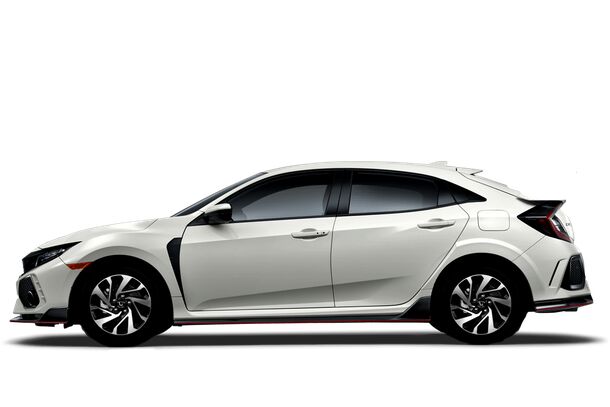
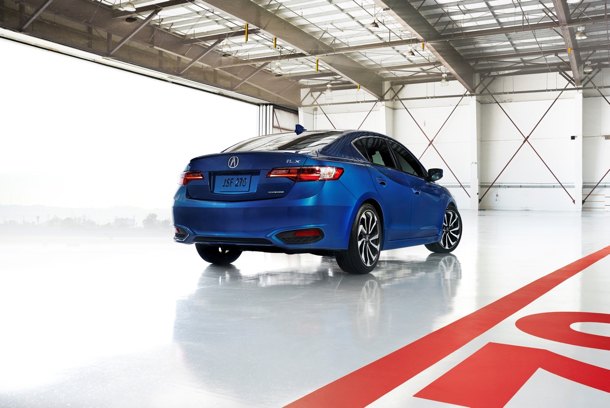




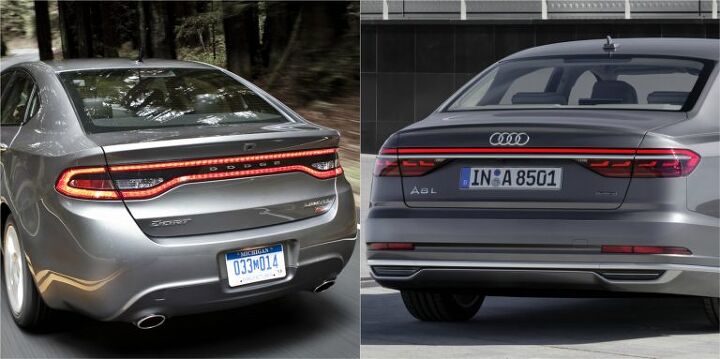

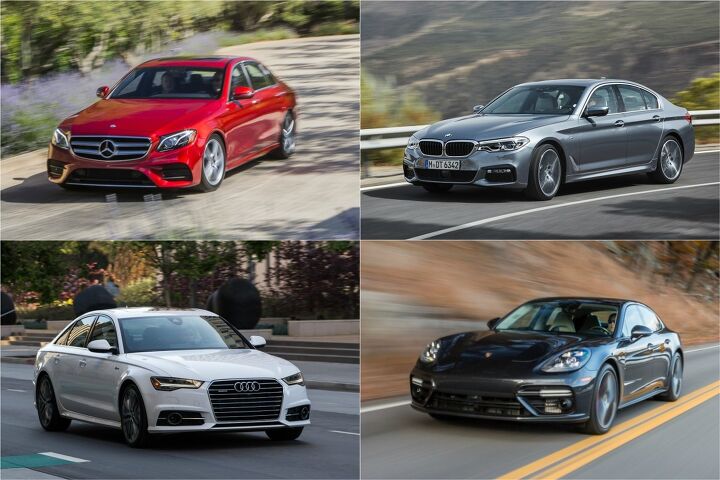


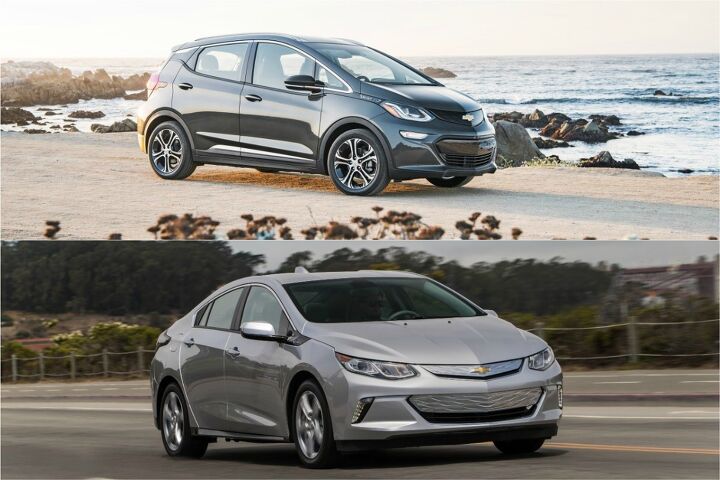

![Partial Next-generation Jeep Wrangler Engine Specs Leaked? [UPDATED]](https://cdn-fastly.thetruthaboutcars.com/media/2022/07/19/9194864/jeep-wrangler-jk-production-ends-friday-model-will-cheerfully-and-capably-dig-its.jpg?size=720x845&nocrop=1)
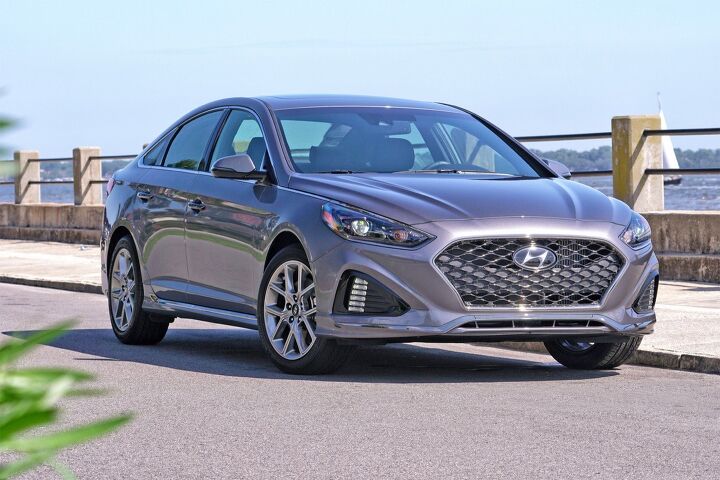
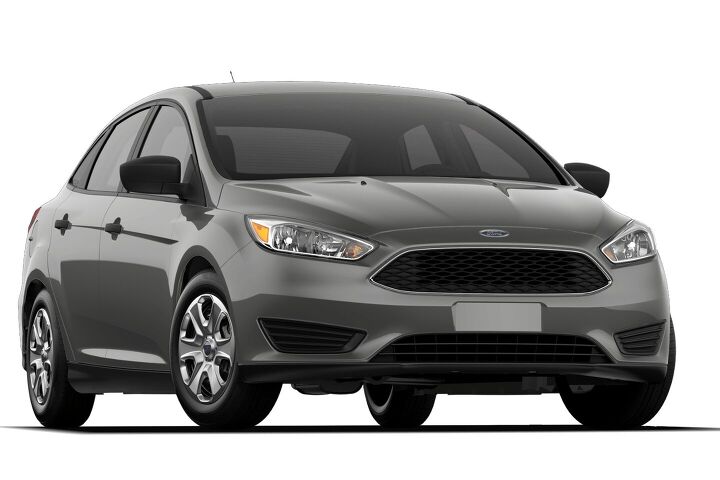

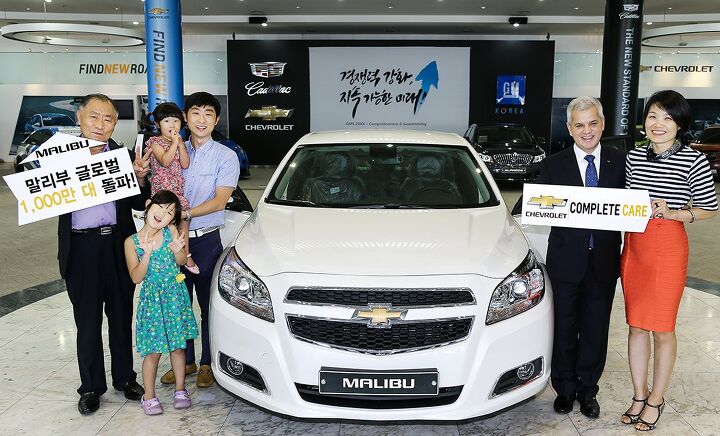

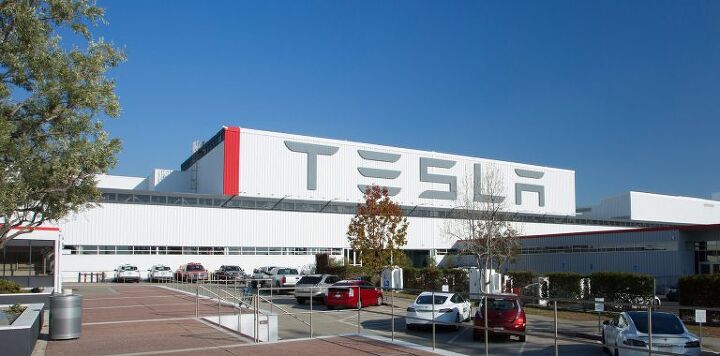


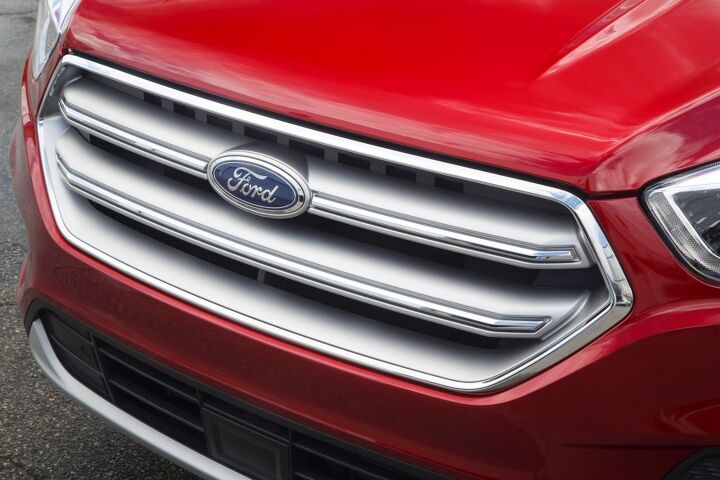




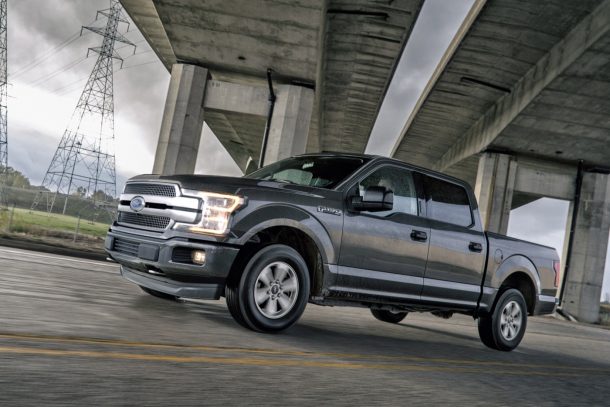


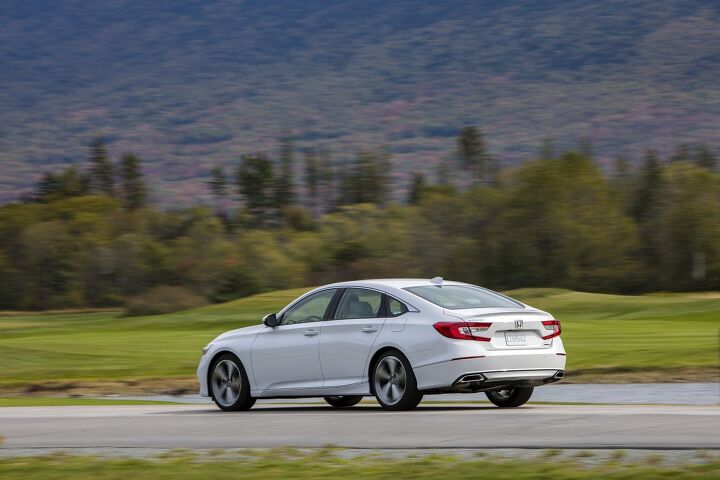
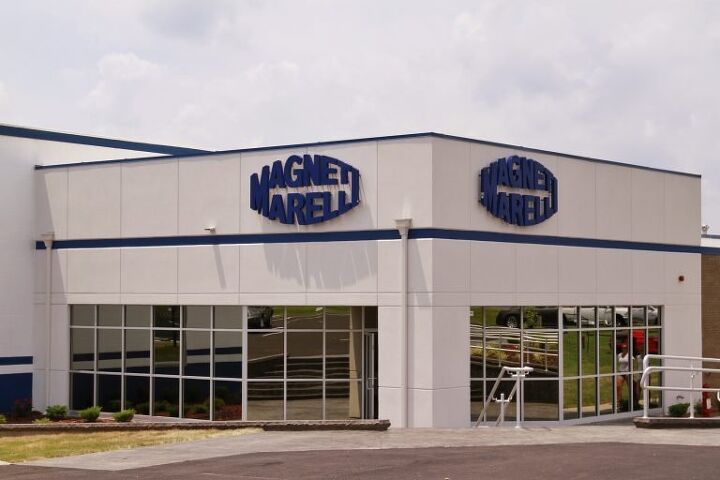
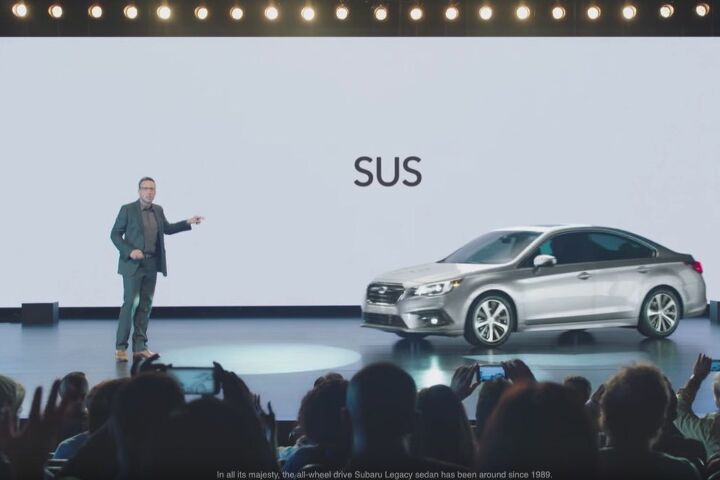
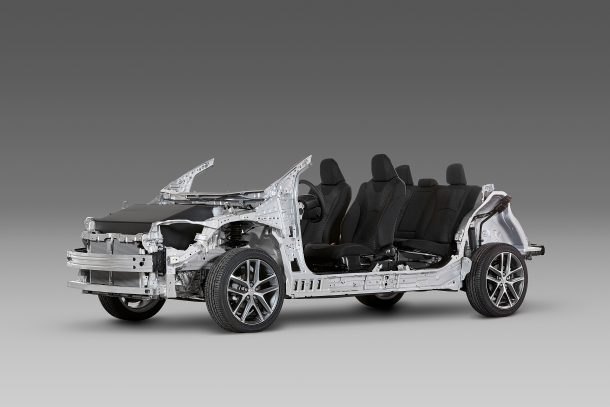





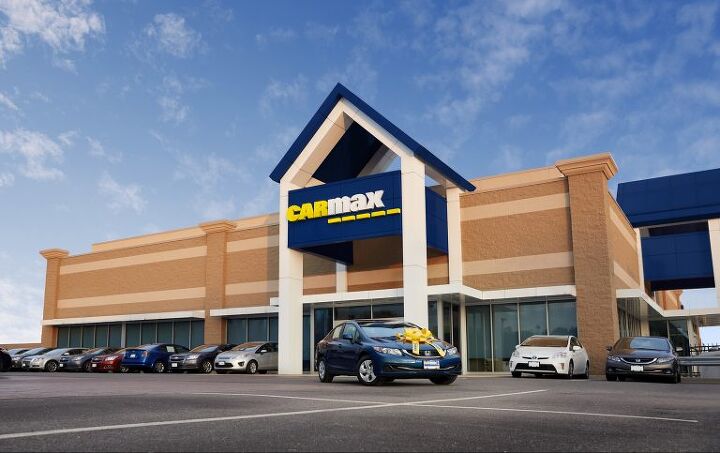


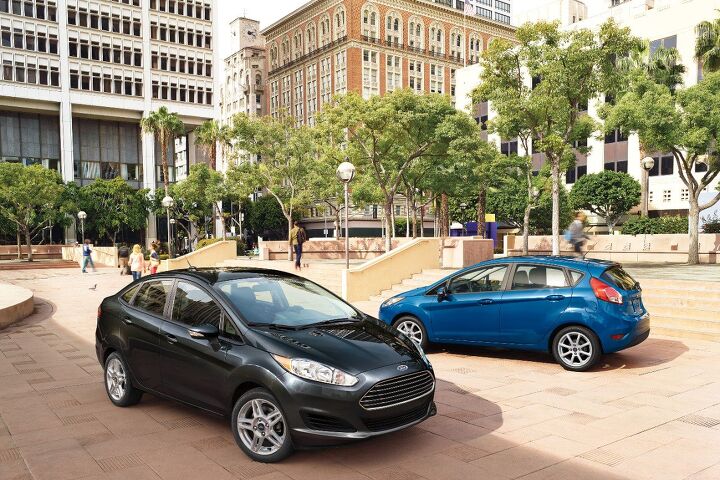



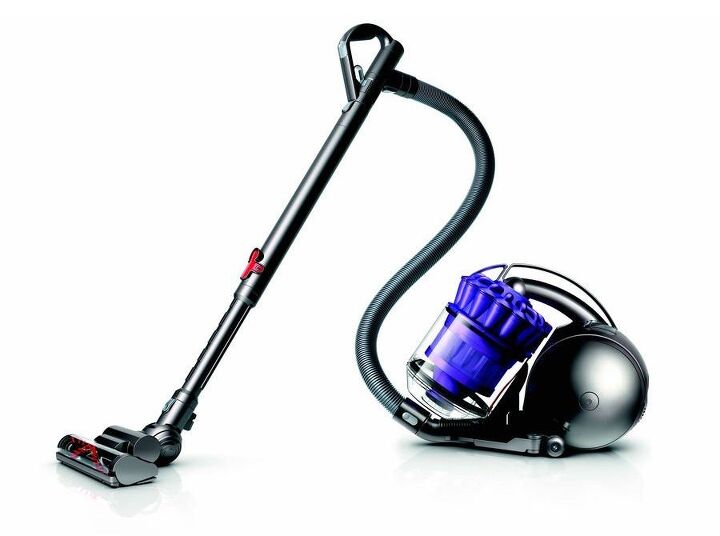













Recent Comments